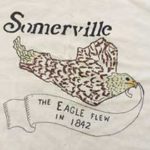
Eagle Feathers #227 – Fort Sumter
By Bob (Monty) Doherty
One hundred and sixty years ago this coming week, the American Civil War began in Charleston Harbor, South Carolina. After years of smoldering pressure between the abolitionist North and the slave-holding Southern states, Fort Sumter became the war’s first battle site.
For 34 hours on April 12 and 13, 1861, Confederate batteries struck the fort with over 3,000 artillery shells causing its surrender. It was the first time since General Washington raised our first American flag on Prospect Hill that our standard was humbled.
*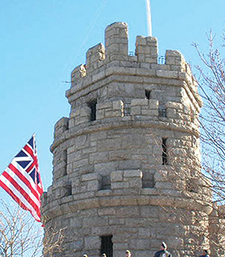 *
*
This attack launched us into the most disastrous and costly war fought on our soil. The nation’s loss was 1.5 million casualties, over 620,000 soldiers killed on both sides, and the destruction of much of our country. During four painful years, every city, town, hamlet, and its citizens had been changed.
Somerville was no different in her adaptation.
- The Somerville Volunteer Militia’s sacrifice during the four-year conflict would be 98 killed and 250 wounded out of 1,485 who served or almost one quarter. Many more served in other military branches.
*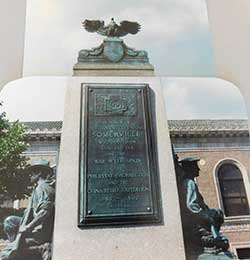 *
* - The 1863 Civil War memorial on Somerville Avenue honors her fallen troops and, as such, is said to be the first in the nation. Another beautiful statue on Central Hill commemorates their valor and conviction.
- During the war, much of the land west of Davis Square was called Camp Cameron and was named after Lincoln’s Secretary of War. Thousands of regional troops were trained there and on Prospect Hill. After the war, the city named many of her streets after states, battles, and heroes of the Union.
*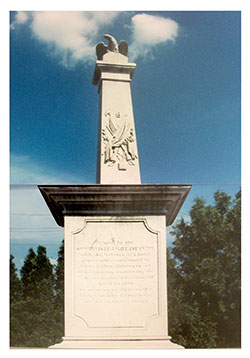 *
* - Winter Hill’s Edward Everett was considered one of the country’s best orators when he delivered a two-hour speech at Gettysburg. It was eclipsed by President Lincoln’s two-minute masterpiece. Afterward, Everett stated to Lincoln, “I wish I could flatter myself that I had come as near to the central idea of the occasion in two hours as you did in two minutes.” A bronze memorial of the Lincoln’s address hangs in Somerville’s City Hall.
- In 1853 Somerville firefighters erected a flagpole at the intersection of Washington Street and Somerville Avenue christening the spot Liberty Pole Square in honor of America’s freedom won. After the Fort Sumter attack, the location was renamed Union Square in honor of preserving the Union.
*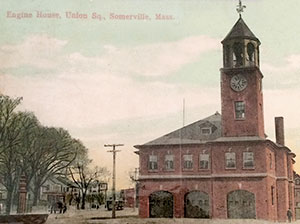 *
* - In 1866, the entrance to the then new quarters of Somerville’s Fire Hose Company #1 at the corner of Webster and Ellsworth Streets was named in homage to the first officer killed in the Civil War. Colonel Elmer Ellsworth was a firefighter and close friend of President Lincoln whom he worked with in Washington, D.C. He was killed after he tore down a Virginia Confederate flag which could be seen from the White House. Today, pieces of the flag pepper many museums across the country. “Remember Ellsworth” was a Northern battle-cry throughout the war.
- The Fort Sumter flag was shot down during the battle and retrieved before the surrender by U.S. Major Robert Anderson. The banner was used as a fundraiser, touring northern cities during the war. It was seen by 100,000 patriots in New York City alone, flying above an equestrian statue of General George Washington. Four years later to the day at the war’s end on April 14, 1865, Major Anderson returned to the Fort and raised the American Flag.
The war was over and the Union had been saved. That night, its savior, Abraham Lincoln, was shot.
*
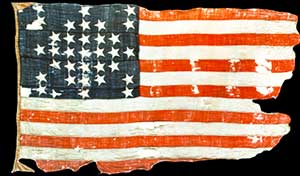












Reader Comments